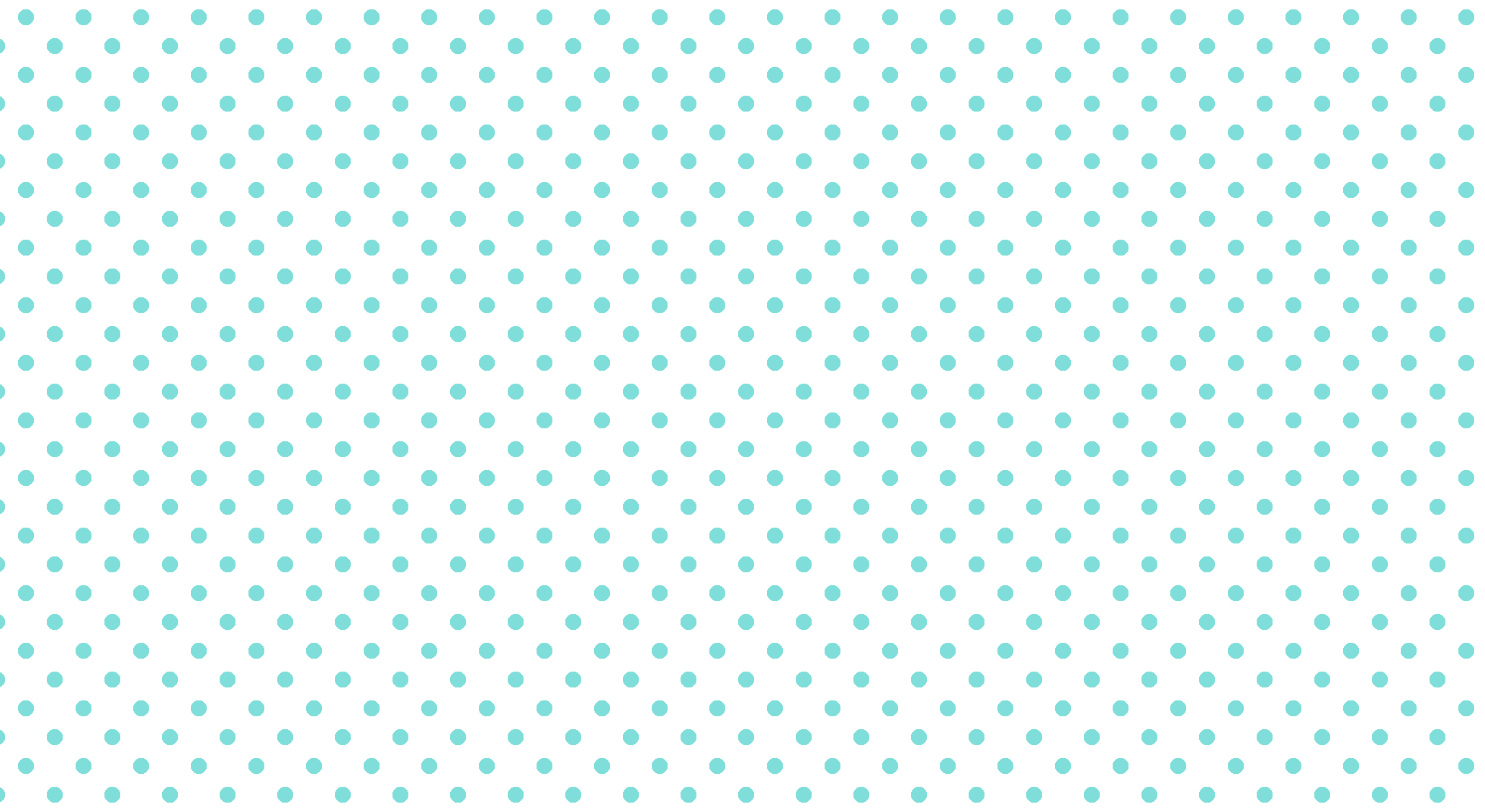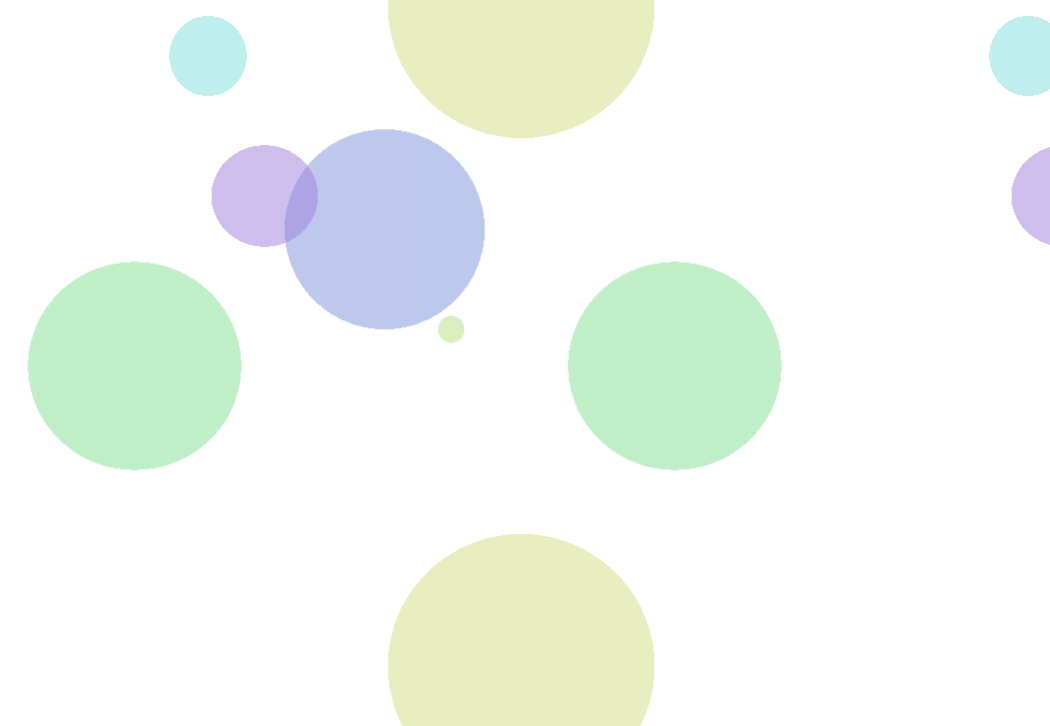- 投稿日:2021-01-07T22:36:51+09:00
【初心者でもわかる】CSSで水玉の背景を作る(整列・ランダム風)
どうも7noteです。CSSで水玉模様を作ります。
背景パターンを画像で作るのもいいですが、CSSで再現することもできます。
規則性のある水玉模様の背景
style.cssbody { background-image: radial-gradient(#7bded9 20%, transparent 20%), radial-gradient(#7bded9 20%, transparent 20%); background-size: 40px 40px; background-position: 0 0, 20px 20px; }ランダム風に見える水玉模様の背景
style.cssbody { background-image: radial-gradient(290px 300px , rgba(123,222,217, 0.5) 20%, transparent 20%), radial-gradient(800px 780px , rgba(123,222,217, 0.5) 20%, transparent 20%), radial-gradient(1000px 990px , rgba(123,222,217, 0.5) 20%, transparent 20%), radial-gradient(400px 380px , rgba(123,222,217, 0.5) 20%, transparent 20%), radial-gradient(750px 750px , rgba(123,222,217, 0.5) 20%, transparent 20%), radial-gradient(100px 100px , rgba(123,222,217, 0.5) 20%, transparent 20%); background-size: 1230px 1280px, 810px 910px, 1470px 990px, 1200px 1700px, 1520px 1200px, 1100px 1300px; background-position: -300px -550px, -200px 100px, 50px 510px, -200px -550px, -180px -250px, 130px -150px; }複数のバラバラのサイズの丸い背景を重ねて作ります。
重なった部分が綺麗に見えるように色は16進数ではなくrgbaで書くことで重なり部分が綺麗に見えます。色もバラバラに変えても綺麗ですね。
まとめ
水玉模様はcanvasやjsを使った方法もあるようです。
適材適所で画像にしたり、CSSで作ったり使い分けるのがいいかなと思います。アニメーションと組み合わせて水玉模様をふわふわさせたり、回転させたりしても面白いサイトができるかもしれませんね!
参考:https://www.esz.co.jp/blog/2766.html
おそまつ!
~ Qiitaで毎日投稿中!! ~
【初心者向け】WEB制作のちょいテク詰め合わせ
- 投稿日:2021-01-07T21:40:24+09:00
スタックコンテキストについて
目的
- z-index使用時に、重なり順が想定と違っていた
- 重なりの仕組みについて整理する
スタックコンテキスト
- スタック(stack)は積み上げる、コンテキスト(context)は文脈という意味
- positionをstatic以外、かつz-indexを指定した場合に生成される集まりのとこ
- z-indexを使用することで、同じスタックコンテキストの要素同士の重なり順を指定できる
実例
CSSとHTMLはこんな感じ(色や位置の記述は割愛)
<div class="squares"> <div class="square square-red">z-index:2</div> <div class="square square-green"> z-index:3 <div class="square square-blue">z-index:1</div> </div> </div>.squares { position: relative; } .square { position: absolute; width: 10rem; height: 10rem; } .square--red { z-index: 2; } .square--blue { z-index: 1; } .square--green { z-index: 3; }・z-indexが1の要素が、一番上に表示されている
・これは、z-indexが3の親要素が起点となっているから
・各要素の重なり順序は下表のようになっている
色 z-index スタックコンテキスト 重なり順 赤 2 root root→赤(z-index:2) 青 1 緑 緑(z-index:3)→青(z-index:1) 緑 3 root root→緑(z-index:3) 青はz-index:3の緑を起点としているため、一番上に表示される
まとめ
z-indexを使用するときは、起点に注意しよう
- 投稿日:2021-01-07T19:25:15+09:00
[Angular] 「基本的なAngularアプリをはじめる」をやってみる(4)親コンポーネントにデータを渡す
「基本的なAngularアプリをはじめる」をやってみる(4)
[Angular] 「基本的なAngularアプリをはじめる」をやってみる(準備)
[Angular] 「基本的なAngularアプリをはじめる」をやってみる(1)
[Angular] 「基本的なAngularアプリをはじめる」をやってみる(2)
[Angular] 「基本的なAngularアプリをはじめる」をやってみる(3)子コンポーネントにデータを渡す
Angular のチュートリアルをやってみています。
親コンポーネントにデータを渡す
Angular公式ページ : 親コンポーネントにデータを渡す
Notify Meボタンを動作させるには、子コンポーネントが通知して親コンポーネントにデータを渡す必要があります。
1.product-alerts.component.ts で、Output と EventEmitter をインポートする
product-alerts.component.tsimport { Component } from '@angular/core'; import { Input } from '@angular/core'; import { Output, EventEmitter } from '@angular/core';2.notify という名前のプロパティを @Output() デコレーターと EventEmitter() のインスタンスで定義する
product-alerts.component.tsexport class ProductAlertsComponent { @Input() product; @Output() notify = new EventEmitter(); }3.Notify Meボタンをイベントバインディングで更新し、notify.emit()メソッドを呼び出す
product-alerts.component.html<p *ngIf="product.price > 700"> <button (click)="notify.emit()">Notify Me</button> </p>4.product-list.component.ts で onNotify() メソッドを定義
product-list.component.tsexport class ProductListComponent { products = products; test_1 = '製品'; share() { window.alert('The product has been shared!'); } onNotify() { window.alert('メッセージ : You will be notified when the product goes on sale'); } }親の ProductListComponentは、ProductAlertsComponentがイベントを発生させたときに動作します。
5.product-list.component.html で、 を製品リストコンポーネントの onNotify() メソッドにバインドする
product-list.component.html<button (click)="share()"> shareボタン </button> <app-product-alerts [product]="product" (notify)="onNotify()"> </app-product-alerts>Notify Meボタンをクリックすると、下図のようなアラートが表示されるようになります。
ここまでで、いちおうAngularチュートリアルの入門編は終わりです。
- 投稿日:2021-01-07T18:23:45+09:00
CSSで「余っている高さすべて」を指定する
やりたいのは上に説明文があって、残りを画像で埋めたい、みたいなケースです。
Flexible Box Layout を使います。
<!DOCTYPE html> <html> <head> <meta charset="UTF-8"/> <style> body { margin: 0; } #content { display: flex; position: absolute; flex-direction: column; margin: 10px; width: 95vw; height: 95vh; } #content>p:last-of-type { flex: 1; min-height: 100px; } .image { height: 100%; max-width: 100%; } </style> </head> <body> <div id="content"> <h1>Flexible Box Layoutのサンプル</h1> <ul> <li>hogehoge</li> <li>fugafuga</li> </ul> <p><img src="computer_desktop_document.png" class="image"></p> </div> </body> </html>
- 投稿日:2021-01-07T09:53:27+09:00
Pug入門
入門背景
Pugで書かれたコードを見た時に動揺してしまったので、Pug入門してみた
Pugとは
HTMLを簡単に書くためのテンプレートエンジン。
Node.jsで動いている。
vueのテンプレートで書ける。メリット
- < > がいらない。(閉じタグがいらない) → 最高。
- 共通部分を分割して再利用できる。 → コンポーネント化?
- 変数が使える。 → ややこしくなりそう。
- ループやifが使える。 → ん?
慣れたらすごい楽そう。
とりあえずPugで書かれたコードが読めるのを目標にサクッと入門してみる。書き方
インデントで階層化していく
test.pugbody h1 Pugの練習タイトルです。 p Pugの練習パラグラフtest.html<body> <h1>Pugの練習タイトルです。</h1> <p>Pugの練習パラグラフ</p> <body>あゝ、見やすい
classは . idは # で
test.pugbody h1.title 簡単にclassがつけれる p#description もちろんidも .text divは省略可能test.html<body> <h1 class="title">簡単にclassがつけれる</h1> <p id="description">もちろんidも</p> <div class="text">divは省略可能</div> <body>直感的!
属性は()で
test.pugbody input(type="email")test.html<body> <input type="email"> <body>半角スペースで何個も追加可能
変数も使える
test.pugbody -const myClasses = ["class1", "class2", "class3"] div(class=myClasses)test.html<body> <div class="class1 class2 class3"></div> <body>おわり
とりあえずこれで少しは読めるとなったと思う。
- 投稿日:2021-01-07T09:12:18+09:00
優良HPによくあるヘッダーのテンプレート
優良な企業のHPによくみられるヘッダーのテンプレート
今回ご紹介するテンプレの内容、特徴。
- ヘッダーがposition:fixed;で固定されている。
- 企業様の名前やロゴ、ナビメニューが両端に表示されている。
- ナビメニューに触れた時アクションが起こる。
主にこのような特徴があると思います。思い当たる節はございませんか?
上記のような構成のコードを紹介いたします。HTML <header> <img src="images/dualslogo.png" alt="logo" class="dualslogo"> <ul> <li>HOME</li> <li>WORKS</li> <li>ABOUT</li> <li>CONTACT</li> </ul> </header> CSS header { position: fixed; width: 100%; display: flex; justify-content: space-between; } ul { display: flex; list-style: none; } li { color: white; transition: all 0.3s; cursor: pointer; //padding,marginなどの調節 } li:hover { 色が変わったりすると良いかもしれません。 }*個人的な意見ですが全体的にパステルカラーを使うと綺麗に見えます。





